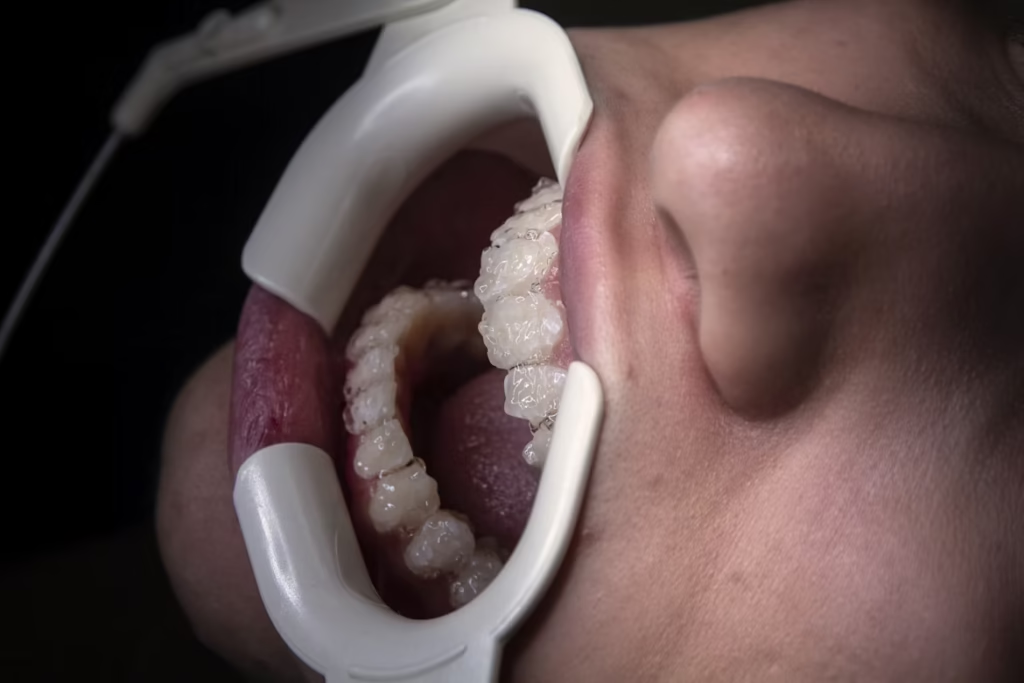A root canal is a dental procedure designed to remove damaged or infected tissue from inside a tooth while preserving its structure. The soft center of the tooth, known as the pulp, contains nerves, connective tissue, and blood vessels. When the pulp becomes inflamed or infected, removing it can relieve pain and prevent further damage. This treatment is common and, when followed by proper dental care, can last for many years. For more background, visit Root Canal.

When Is a Root Canal Needed?
A root canal is typically performed when the pulp is injured, inflamed, or infected. The crown of the tooth can remain intact even if the pulp is dead, making removal the best way to preserve it.
Common causes include:
- Deep decay from untreated cavities
- Multiple dental procedures on the same tooth
- Chips or cracks in the tooth
- Tooth injuries that damage the pulp without visible cracks
Symptoms may include persistent tooth pain, swelling, and a sensation of warmth in the gums. A dentist will examine the tooth and take X-rays to confirm the diagnosis.
How Is a Root Canal Performed?
The procedure is usually carried out by a general dentist or an endodontist under local anesthesia. It begins with numbing the gum near the affected tooth. Once the area is numb, a small opening is made in the crown to access the pulp.
The dentist then removes the pulp using fine instruments, ensuring all canals are thoroughly cleaned. After cleaning, the area is disinfected and sealed with a filling material called gutta-percha. Finally, the opening is closed with a temporary filling. In some cases, a permanent crown is placed immediately, while in others, the crown is added during a follow-up visit.

Recovery After a Root Canal
Mild soreness and gum swelling are common for a few days after the procedure. Over-the-counter pain relievers are usually enough to manage discomfort. Most patients resume normal activities within 24 hours but should avoid chewing on the treated tooth until the permanent restoration is in place.
Follow-up visits ensure the tooth has healed and any infection is gone. Permanent fillings or crowns help restore function and protect the tooth from future damage. To learn more about treatment duration, see How Long Does a Root Canal Take?.

Risks and Limitations
Although a root canal is designed to save a tooth, some cases may result in tooth loss if the damage is too severe. There is also a small risk of infection if bacteria remain inside the tooth. Alternative treatments, such as extraction and replacement with a denture, bridge, or implant, may be considered in certain situations.
Contraindications
- A root canal may not be suitable in cases of:
- Severe tooth decay or damage beyond repair
- Advanced periodontal disease
- Complex root canal anatomy
- Certain medical conditions that impair healing
- Allergies to anesthesia
Long-Term Outlook
With proper oral hygiene, a tooth treated with a root canal can last for many years. Regular brushing, flossing, and dental check-ups are essential to maintain results.
Root Canal – Frequently Asked Questions
-
What is a root canal, and why is it done?
A root canal is a dental procedure that removes damaged or infected pulp from inside a tooth. It helps save the tooth structure and prevents further infection.
-
How long does a root canal take?
The time varies depending on the tooth and the complexity of the infection. A single root canal can take 30 to 90 minutes, but molars may take longer. Some cases require two visits.
-
Is a root canal painful?
With modern anesthesia, a root canal is usually no more painful than getting a regular filling. Mild soreness or sensitivity afterward is normal and usually fades in a few days.
-
How long does it take to recover from a root canal?
Most people return to normal activities the next day. Some gum tenderness or swelling may last for a few days, but over-the-counter pain relievers can help.
-
How long does a root canal last?
With proper oral care, a root canal can last many years—often for the rest of your life. Good dental hygiene and regular check-ups are key to long-term success.
-
What happens if I don’t get a root canal?
Without treatment, an infected tooth can worsen, leading to severe pain, abscesses, and possible tooth loss. The infection can also spread to surrounding tissues and other parts of the body.
-
Do I need a crown after a root canal?
Many teeth, especially molars, benefit from a crown after a root canal. A crown strengthens the tooth and prevents future damage, particularly for teeth used in chewing.
Share this content:













Post Comment
You must be logged in to post a comment.